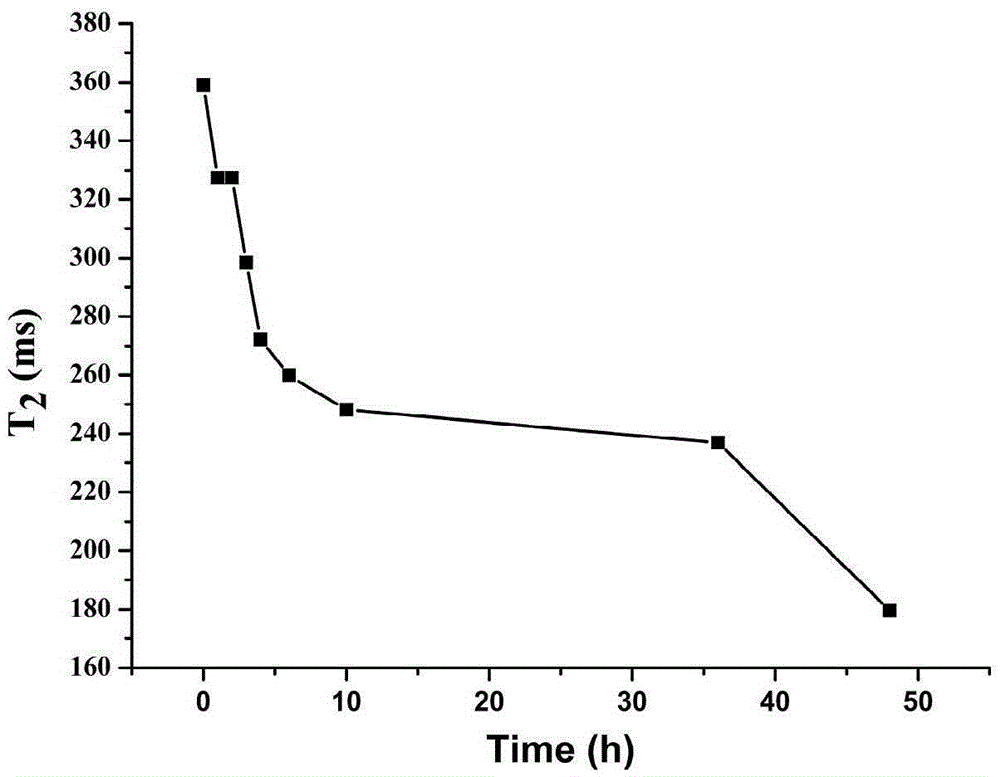Method for nondestructively testing trepang autolysis on basis of nuclear magnetic resonance technique
A nuclear magnetic resonance and non-destructive testing technology, which is applied in the direction of nuclear magnetic resonance analysis, material analysis through resonance, and measuring devices, to achieve the effects of promoting seafood quality control, short time consumption, and high accuracy
- Summary
- Abstract
- Description
- Claims
- Application Information
AI Technical Summary
Problems solved by technology
Method used
Image
Examples
Embodiment 1
[0030] The market buys five fresh sea cucumbers (parallel samples), and the quality is 45-50g. Pour fresh sea cucumbers into a clean 500mL beaker, take out one sea cucumber, and use a paper knife to cut a gap of about 3 cm longitudinally in the abdomen of the sea cucumber, pull out the intestines of the sea cucumber from the opening, and use scissors to open the abdominal cavity of the sea cucumber. Several gray tendons attached to the inner wall are cut off to obtain sea cucumbers with intestines dissected.
[0031] Naturally placed, NMR signal acquisition at 0, 1, 2, 3, 4, 6, 10, 36, 48 hours:
[0032] Adopt MiniMR-Rat magnetic resonance imaging analyzer, utilize Carr-Purcell-Meiboom-Gill (CPMG) sequence, measure sea cucumber sample transverse relaxation time T2, parameter setting is: 90 degree pulse width P1: 13 μ s, 180 degree pulse width P2: 26μs, repeat sampling waiting time Tw: 5000ms, analog gain RG1: 15, digital gain DRG1: 3, preamplifier gain PRG: 1, NS: 8, NECH: 80...
Embodiment 2
[0034] Example 2: Monitoring the Autolysis Process of Fresh Sea Cucumber by Magnetic Resonance Weighted Imaging
[0035] A fresh sea cucumber sample, 48.82g, was selected and dissected according to the method of Example 1, put into a 90cm glass petri dish, and placed at room temperature for 48h. Using MiniMR-Rat magnetic resonance imaging analyzer, using multi-layer spin echo (SE) sequence, measuring the transverse relaxation time T2 and magnetic resonance imaging (T1 weighted imaging and T2 weighted imaging) of fresh sea cucumber samples during autolysis, parameter settings For: slices: 5, FovRead: 100mm, FovPhase: 100mm, slicewidth: 3.0mm, slicegap: 2.0mm, Readsize: 256, Phasesize: 192, Average: 4, T1 weighted imaging: TR: 300, TE: 19; T2 weighted Imaging: TR:1600, TE:50. To establish a method for detecting sea cucumber autolysis by nuclear magnetic resonance. After magnetic resonance T1-weighted imaging and T2-weighted imaging ( Figure 4 , the original picture is in col...
PUM
 Login to View More
Login to View More Abstract
Description
Claims
Application Information
 Login to View More
Login to View More - R&D
- Intellectual Property
- Life Sciences
- Materials
- Tech Scout
- Unparalleled Data Quality
- Higher Quality Content
- 60% Fewer Hallucinations
Browse by: Latest US Patents, China's latest patents, Technical Efficacy Thesaurus, Application Domain, Technology Topic, Popular Technical Reports.
© 2025 PatSnap. All rights reserved.Legal|Privacy policy|Modern Slavery Act Transparency Statement|Sitemap|About US| Contact US: help@patsnap.com



